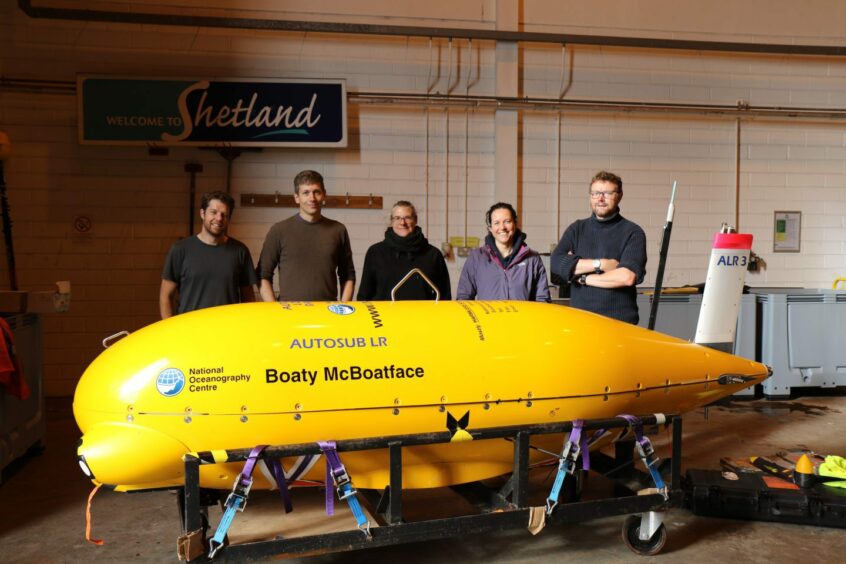
The UK’s National Oceanography Centre (NOC) has sent an autonomous submarine vessel (AUV) to monitor decommissioned North Sea fields as part of a pioneering marine trial.
In a first-of-its-kind mission, AUV Boaty McBoatface will be deployed from Lerwick to monitor end-of-life oil fields off the coast of Shetland.
The craft – affectionately known as Boaty – is so-called after the name was rejected during a public competition held for its larger sister, the polar research vessel eventually dubbed the RRS Sir David Attenborough.
However, the people’s favourite was allowed to live on in form of the vessel’s autonomous AUV.
The Autosub Long-Range ocean robot submarine will explore several oil and gas structures, including NW Hutton and Miller as well as the Braemar Pockmarks Marine Protected Area, as part of a study to help monitor the marine environment.
The 3.6m craft weighs around 700 kg, and can reach depths of 6,000 metres. Fully charged it can travel up to 2,000km (1,200 miles) in a single mission.
This latest expedition forms part of the NOC’s Autonomous Techniques for infraStructure Ecological Assessment (AT-SEA) project, which aims to trial the concept of using remote submarines like this for low-impact environmental monitoring at these offshore sites.
Boaty was dispatched near Lerwick on Monday 19 September and will journey first to the NW Hutton site to the north east of the islands.
Discovered in 1975, the field ceased production in 2002 – though was more recently amalgamated with the Darwin discovery and now forms part of the Galapagos redevelopment.
It will then return around 10 days later with the detailed survey information onboard, including photographs of the seabed, which will be automatically stitched together to make a map of the seafloor, structures present, and the animals that live there.
Sensor systems will measure a range of properties of the water, including the presence of hydrocarbons.
As well as the decommissioned sites, the robot will visit a special marine protected area that is known to have natural leaks of gas to test whether the system can reliably detect a leak, should one occur in the future.
Once recharged, a second mission will see Boaty deployed to Miller and the Braemar Pockmarks area in early October. Miller stopped producing in 2007 and was fully dismantled in 2018.
On return to shore, the project team will examine all the data obtained and compare it to that gathered using standard survey ship methods.
The team will also test if the same environmental trends can be identified from both datasets to determine if the automated approach would be a suitable replacement for standard survey ship operations.
The hope is that the technology may eventually replace the current approach for environmental monitoring for decommissioning, which typically requires dedicated ships and teams of people offshore.
Adopting this approach would help lower emissions, risks and the cost of these survey operations.
Project lead for AT-SEA, NOC’s Daniel Jones said: “The overall goal of the project is to improve the environmental protection of the North Sea at a reduced cost and impact to the environment. We aim to demonstrate how this leading robotic technology from the NOC could be used worldwide to support this crucial ocean monitoring.”
This is particularly important given the thousands of oil and gas structures currently approaching the end of their lives, with nearly 500 such sites in UK waters alone.
Added Mr Jones: “This technology has the potential to change the way marine surveys are carried out in the future. Autonomous submarines could offer many advantages over current approaches; improving the quality and quantity of environmental information while cutting the cost and environmental impact for a survey ship and its crew. The AT-SEA project will test this concept in UK waters and carry out the first fully autonomous environmental assessment of multiple decommissioning sites.”
Recommended for you
